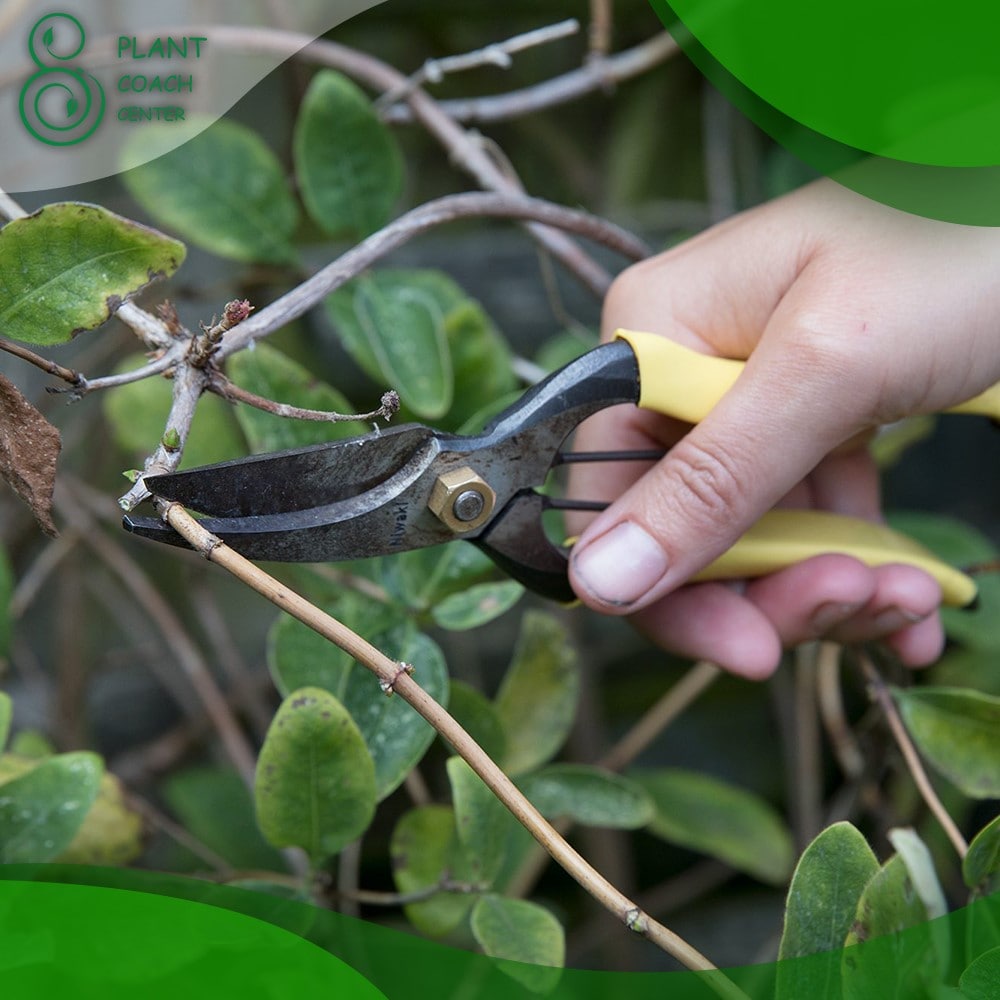When Do You Prune Honeysuckle?
Welcome to the verdant world of honeysuckles, where fragrant blooms and lush foliage captivate the senses. As you cultivate these enchanting vines and shrubs, one crucial question emerges: when do you prune honeysuckle? Pruning, a delicate art form, holds the key to unlocking the plant’s full potential, ensuring vigorous growth and a symphony of vibrant blossoms.
Understanding the nuanced dance of timing, cues, and techniques is paramount for novice gardeners and seasoned horticulturists alike. In this horticultural guide, we will unravel the mysteries of honeysuckle pruning, delving into the secrets hidden within each season, decoding the language of your plant, and exploring a myriad of strategies tailored to different varieties and aesthetic desires.
Whether you’re seeking to revive an overlooked corner of your garden, sculpt a breathtaking outdoor space, or simply bask in the splendor of healthy honeysuckle, this article will equip you with the knowledge to master the art of pruning and elevate your gardening prowess to new heights.
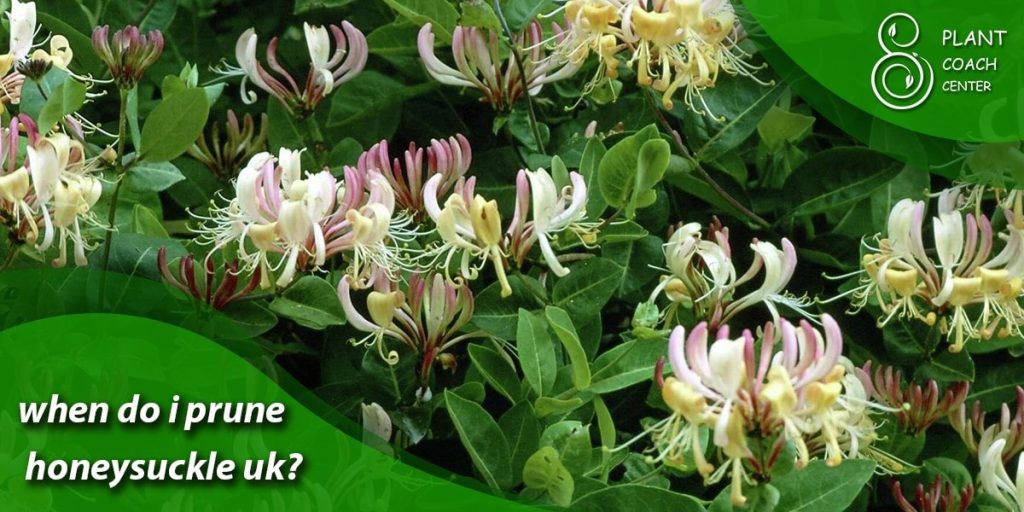
Timing Matters: Decoding the Seasons for Pruning
In the honeysuckle care realm, timing is a crucial conductor orchestrating the plant’s growth and blooming performance. Each season brings its own set of signals, opportunities, and challenges that savvy gardeners can leverage to ensure the health and beauty of their honeysuckle.
Spring Symphony
As winter’s grip loosens, the advent of spring marks a prime moment for honeysuckle rejuvenation. Early spring, just before new growth emerges, is an ideal time for rejuvenating pruning. Trimming back dead or damaged wood and cutting away straggly development encourages robust new shoots and ensures your honeysuckle thrives throughout the season.
Summer Serenade
The height of summer sees your honeysuckle at its most vigorous. While light maintenance pruning can be carried out during this time, major pruning should be approached cautiously, as it might impact the current year’s blooms. In late summer, post-blooming presents a window for selective pruning, shaping the plant while leaving ample time for the following year’s buds to form.
Autumn Overture
As autumn’s cool breeze sweeps in, honeysuckles begin to wind down their growth. This is a perfect opportunity for a final grooming session. Remove any spent blooms, trim excessive growth, and tidy up the plant’s appearance. Pruning in the fall aids in maintaining a neat and tidy look during the dormant season while also preparing the plant for the burst of growth it will experience in the following spring.
Winter Whispers
While honeysuckles are predominantly deciduous, some evergreen varieties might require attention during winter. When the plant is in its dormant state, late winter is a suitable time for light pruning. Focus on removing dead or crossing branches, allowing the plant’s structure to remain healthy and balanced.
Reading the Signs: Recognizing Pruning Cues from Your Honeysuckle
Embarking on a successful honeysuckle pruning journey involves more than just following a calendar. Your honeysuckle plant communicates its needs through visual cues and growth patterns that can guide your pruning decisions.
Budding Beginnings
As spring approaches, keep a watchful eye on your honeysuckle buds. These tiny, dormant structures hold clues about the plant’s readiness for growth. Healthy, plump buds are a positive indicator of a vigorous plant, while shriveled or discolored buds might suggest underlying issues. If your honeysuckle’s buds look lackluster, it might be time to assess its overall health and consider rejuvenation pruning.
Vigorous Vines
The growth of new shoots and vines is a telltale sign of your honeysuckle’s vitality. Your plant is in good health if you notice robust, well-spaced projections reaching for the sun. On the other hand, if you observe weak or spindly growth, your honeysuckle might struggle due to insufficient light or improper care. Pruning can help redirect the plant’s energy toward more robust growth.
Flower Power
The blooms of your honeysuckle are a visual delight and a key indicator of its condition. Abundant, colorful blossoms signal optimal health and care. However, if your honeysuckle produces fewer blooms than usual, it might indicate overcrowding, disease, or inadequate pruning. Regularly removing spent flowers, a practice known as deadheading, encourages the plant to channel energy into producing more blooms.
Foliage Feedback
The leaves of your honeysuckle can reveal a wealth of information about its well-being. Lush, green foliage signifies robust growth while yellowing, wilting, or discolored leaves might hint at issues like nutrient deficiencies or pests. Pruning away unhealthy foliage improves the plant’s appearance and prevents the spread of potential problems.
Twig Talk
Observing the condition of the plant’s twigs and branches is another way to assess its health. Brittle, dead branches can be safely pruned away, while supple, flexible twigs indicate active growth. Crossing or rubbing branches might need attention to prevent them from causing damage or hindering airflow.
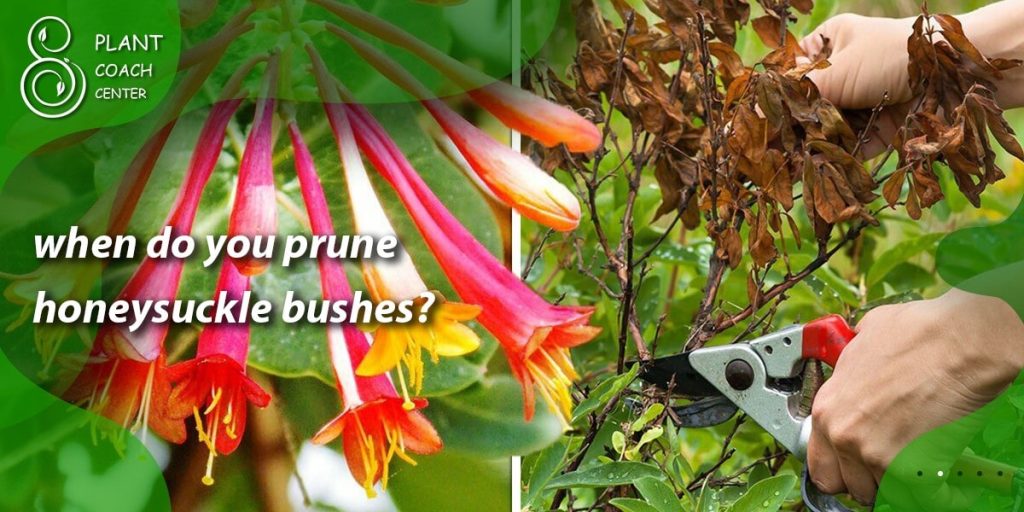
Pruning Strategies for Maximum Bloom Power
Pruning honeysuckle isn’t just about snipping here and there; it’s an art that can significantly impact the plant’s blooming potential. Effective pruning strategies can harness your honeysuckle’s energy to produce abundant, vibrant blooms and lush foliage.
Selective Shaping
One of the key strategies for enhancing bloom power is selective shaping. Trimming back unruly or excessive growth allows the plant to focus its energy on developing new shoots and flowers. Carefully remove weak or dead branches to encourage the development of solid and productive stems that will bear the weight of future blooms.
Bud Preservation
Timing is of the essence when it comes to pruning for maximum blooms. Remember when your honeysuckle typically sets buds to avoid inadvertently sacrificing next season’s flowers. If your variety blooms on old wood (last year’s growth), prune immediately after flowering to give new buds ample time to form. Pruning in late winter or early spring is ideal if it blooms on new wood, such as the current season’s growth.
Rejuvenation Rituals
Over time, honeysuckles can become overcrowded, hindering air circulation and sunlight penetration. Rejuvenation pruning involves removing a portion of old, woody growth near the base of the plant. This practice invigorates the plant by stimulating the development of new shoots and encouraging healthier, more prolific blooms. However, exercise caution—don’t perform drastic rejuvenation on a single-year basis, as it may affect flowering for a season or two.
Mindful Deadheading
Deadheading, the process of removing spent blooms, is a simple yet effective technique to promote continued blooming. Snipping off faded flowers prevents the plant from channeling energy into producing seeds and redirects it toward generating new buds. Regular deadheading extends the blooming period, creating a more continuous display of color and fragrance.
Balancing Act
Striking a balance between pruning for growth and preserving buds is crucial. While you aim to encourage new growth, avoid excessive pruning that could remove potential flowering sites. The art lies in understanding your honeysuckle’s growth habits, blooming pattern, and variety-specific requirements.
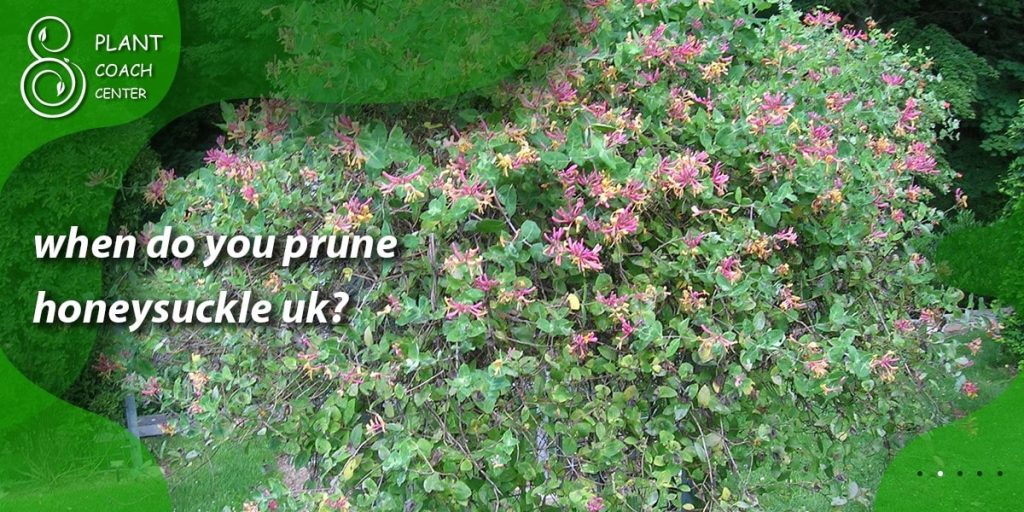
Annual Rituals: Yearly Pruning Calendar for Honeysuckle Enthusiasts
In the captivating world of honeysuckle care, having a well-structured yearly pruning calendar can be your compass, guiding you through the seasons to achieve optimal growth, health, and beauty. This guide will help you synchronize your efforts with nature’s rhythm, ensuring your honeysuckle remains a flourishing masterpiece year after year.
Early Spring (March-April)
As the first signs of spring emerge, it’s time for rejuvenation pruning. Trim away dead or damaged branches, as well as any tangled growth. Focus on cleaning up the plant’s structure and encouraging new shoots.
Late Spring (May-June)
During this period, your honeysuckle is actively growing and potentially blooming. Minor maintenance pruning can be done to maintain the plant’s shape and remove any weak or crossing branches. Avoid heavy pruning at this time to preserve the current year’s blooms.
Summer (July-August)
Honeysuckles are in full bloom, adorning your space with their enchanting flowers. While minimal pruning is recommended during this period, remove spent blooms through deadheading to encourage continuous blooming.
Late Summer (August-September)
As summer wanes, seize the opportunity for selective pruning. Trim back leggy growth and shape the plant as needed. Remember that pruning too late into the season might reduce next year’s blooms.
Fall (October-November)
With the onset of fall, perform a final grooming session. Trim away any remaining spent blooms and neaten the plant’s appearance. This prepares your honeysuckle for the winter months while maintaining its elegance.
Late Winter (February)
As winter’s grip looms, take advantage of the plant’s dormant state for light pruning. Remove dead or crossing branches, ensuring a solid foundation for the growing season.
Evergreen Varieties
If you have evergreen honeysuckle varieties, tend to them in late winter or early spring. Prune lightly to maintain shape and remove dead growth, keeping the plant tidy and healthy.
Shaping Your Space: Pruning for Aesthetic Appeal
Honeysuckles possess a captivating ability to grace your garden with vibrant colors and intoxicating fragrances and transform your outdoor space into a work of art. Pruning for aesthetic appeal is a creative endeavor that allows you to sculpt your honeysuckle into unique forms, enhancing the visual allure of your surroundings.
Arbors and Trellises
If you’ve adorned your garden with arbors or trellises, honeysuckles can be trained to climb and weave through these structures, creating enchanting archways and tunnels. To achieve this effect, prune by guiding the plant’s growth along the desired path trimming away excess foliage to maintain a balanced appearance.
Topiary Marvels
Honeysuckles can be pruned into delightful topiaries, turning your garden into a whimsical wonderland. Careful and consistent pruning is critical, whether aiming for geometric shapes or more intricate designs. Begin shaping when the plant is young, and regularly trim to maintain the desired form.
Hedges and Borders
Utilize honeysuckles to establish striking hedges or borders that demarcate spaces and infuse them with natural beauty. Regular pruning can create dense and uniform growth, contributing to a well-manicured appearance. Opt for a balanced approach, trimming only as needed to avoid over-pruning and disrupting flowering.
Potted Elegance
Honeysuckles can thrive in containers, adding a touch of elegance to patios, balconies, and porches. Pot pruning should focus on maintaining a compact shape while promoting healthy growth. Trim back wayward stems and faded blooms to keep the plant looking neat and inviting.
Mixed Gardens
Integrate honeysuckles into mixed gardens for a tapestry of colors and textures. Prune to enhance the plant’s contribution to the overall design while ensuring it doesn’t overshadow other elements. Regular monitoring and targeted pruning keep the honeysuckle’s growth harmonized with its companions.
Beyond the Basics
Pruning for aesthetic appeal is about transcending the basics and letting your creative spirit shine. Experiment with various shapes, patterns, and combinations to create a personalized masterpiece. Remember that pruning is an ongoing process, requiring attentive care to maintain your desired aesthetic.
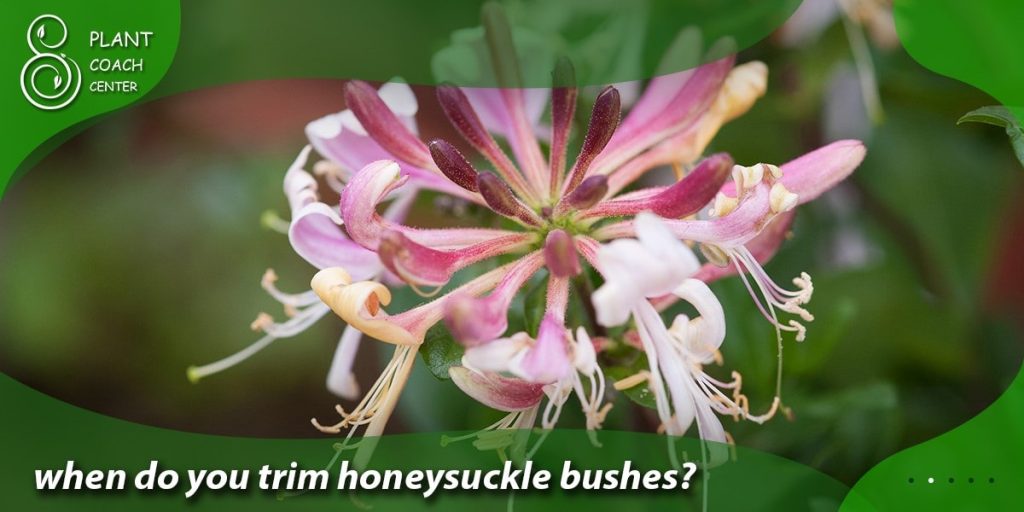
Reviving Neglected Honeysuckle: Restorative Pruning Techniques
Life sometimes gets busy, and our beloved honeysuckle plants can be neglected, overgrown, and struggling. But fear not, for restorative pruning can breathe new life into these once-vibrant beauties, transforming them into thriving focal points of your garden again.
Assessment and Preparation
Begin by assessing the extent of neglect and identifying areas that need attention. Inspect the plant for deadwood, disease, and areas of overcrowding. Equip yourself with sharp pruning tools, gloves, and sanitizing solutions to prevent the spread of disease.
Rejuvenation Pruning
For severely overgrown honeysuckles, a rejuvenation pruning approach is ideal. In late winter or early spring, prune back a significant portion of the plant, removing up to a third of its growth. Focus on removing old, woody branches near the base, promoting the development of new, vigorous shoots.
Step-by-Step Approach
If your honeysuckle needs to be more noticed, adopt a step-by-step approach throughout a few seasons. Start by removing dead and diseased branches. In the subsequent year, address overcrowding by selectively thinning out branches. Follow this up with shaping and minor pruning in the third year to restore its beauty.
Staggered Pruning
Another approach involves staggered pruning. Instead of pruning all at once, divide the process into stages over a few years. This minimizes the shock to the plant and allows it to gradually adjust to the changes.
Vigilant Care
After restorative pruning, offer your honeysuckle diligent care. Provide adequate water, nutrients, and sunlight to fuel its rejuvenation. Regularly inspect the plant for signs of regrowth and adjust your pruning strategy accordingly.
Patience Rewarded
Reviving neglected honeysuckles demands patience. The plant may take a year or two to fully bounce back and produce its characteristic blooms. The reward, however, transforms a struggling plant into a thriving, flourishing centerpiece.
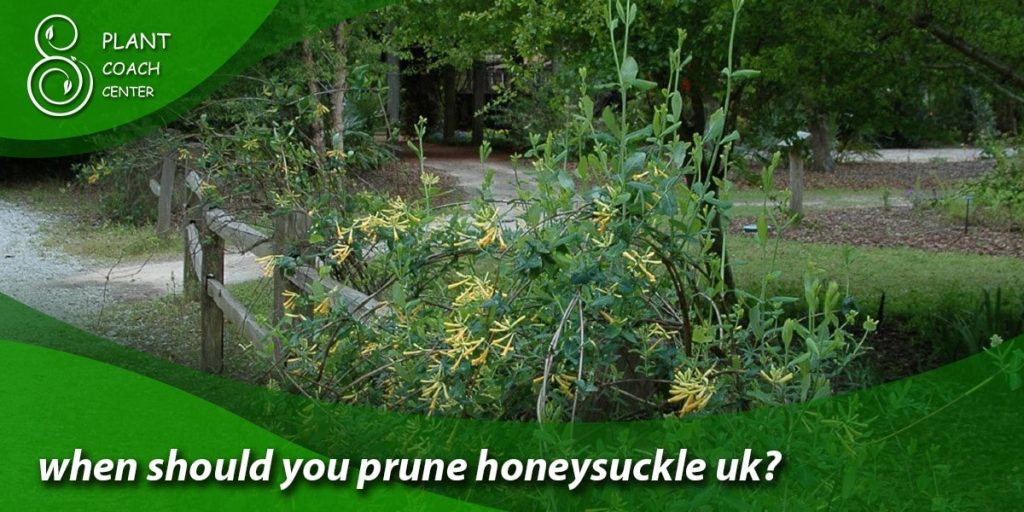
Honeysuckle Varieties and Their Unique Pruning Requirements
The world of honeysuckles is a diverse and enchanting realm, boasting a variety of species and cultivars, each with its own distinct characteristics and growth habits. Understanding the specific pruning needs of different honeysuckle varieties is essential to nurturing their individual beauty and maximizing their potential.
Climbing Honeysuckles (Lonicera spp.)
These charismatic climbers are known for their twining vines and alluring fragrances. Pruning timing varies based on flowering patterns. For species that bloom on last year’s wood, prune right after flowering to allow new growth to mature and set buds. For those that bloom on new growth, prune in late winter or early spring to encourage robust flowering shoots.
Shrub Honeysuckles (Diervilla lonicera)
These hardy shrubs offer a bushy, multi-stemmed growth habit. Pruning in early spring is recommended to remove weak, damaged, or crossing branches. This encourages a well-structured framework and optimal bloom production.
Japanese Honeysuckle (Lonicera japonica)
Renowned for its vigorous growth, Japanese honeysuckle can sometimes become invasive. Pruning, usually in early spring, focuses on controlling its exuberance. Remove excess growth and thin out dense areas to keep the plant in check.
Woodbine Honeysuckle (Lonicera periclymenum)
With its nostalgic scent and charming flowers, woodbine honeysuckle requires light pruning in late winter or early spring. Trim back excess growth and maintain a balanced shape while preserving the previous year’s wood for optimal flowering.
Evergreen Honeysuckle (Lonicera sempervirens)
Pruning these year-round beauties requires a light touch. After the initial flowering period, which usually occurs in late spring to early summer, trim back spent blooms to encourage a potential second flush of flowers later in the season.
Variety-Specific Insights
While these are just a few examples, it’s crucial to research the specifics of your honeysuckle variety. Factors such as growth habits, bloom patterns, and desired forms all play a role in determining the best pruning approach.
Personalized Care
Tailoring your pruning approach to each honeysuckle variety is like crafting a bespoke suit—it ensures a perfect fit. By understanding the distinct needs and nuances of different honeysuckle types, you can provide personalized care that nurtures their unique charm, resulting in a garden brimming with various captivating forms and colors.
Conclusion
In the tapestry of gardening, honing the art of pruning honeysuckles is a captivating endeavor that merges horticultural science with creative expression. As you traverse the seasons, the symphony of timing, the whispers of the plant’s growth, and the finesse of your techniques harmonize to orchestrate a breathtaking display of nature’s wonders. From decoding the cues your honeysuckle imparts to delving into strategies that elevate its bloom power, the journey is as rewarding as the destination.
Through annual rituals, aesthetic sculpting, restorative interventions, and honoring the diversity of honeysuckle varieties, you wield the power to transform your garden into a living masterpiece that beckons to both eyes and senses. So, whether you’re nurturing a neglected gem back to life or guiding a meticulously pruned spectacle, remember that each cut tells a story of nurturing, growth and the dance of life itself.
Your honeysuckle flourishes with each season’s embrace, reflecting your passion and dedication. As you venture forth into the world of honeysuckle pruning, may your gardening journey be adorned with the guidance and knowledge found on PlantCouchCenter.com, ensuring that your efforts yield a resplendent, fragrant canvas that speaks to the very heart of nature’s beauty.
When is the best time to prune honeysuckle?
Prune honeysuckle after flowering or during late winter/early spring, depending on the blooming pattern of your specific variety.
Can I prune honeysuckle in summer?
Yes, but avoid heavy pruning during summer to preserve the current year's blooms. Opt for light maintenance and deadheading.
How do I revive an overgrown honeysuckle?
Use rejuvenation pruning by trimming back old wood near the base. Gradually restore vitality over a couple of years.


